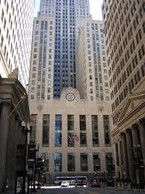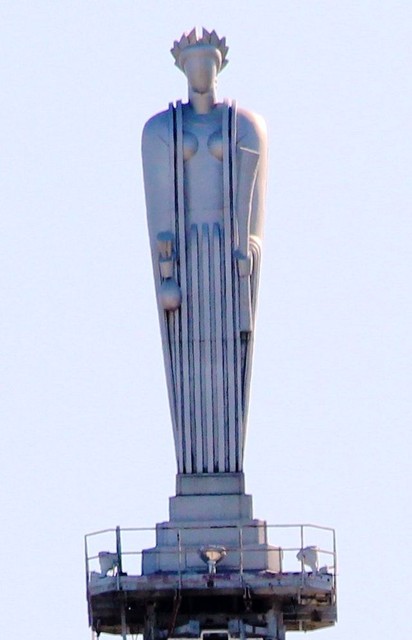Chicago Board of Trade Building
Introduction
Text-to-speech Audio
Images
Front view of "The Chicago Board of Trade Building", Chicago's tallest building from 1930 until 1965.

Aluminum statue by sculptor John H. Storrs of the Roman goddess of grain, Ceres, holding a sheaf of wheat in the left hand and a bag of corn in the right hand, as a nod to the exchange's heritage as a commodities market.

Backstory and Context
Text-to-speech Audio
When the Chicago Board of Trade was organized in 1848, it was located in a few rooms over Gage and Haines's flour store on South Water Street. During its early years, the Board seemed constantly on the move in a search for more floor space for its rapidly expanding operations. Since 1852 the Board was relocating several times until 1865 when in finally moved to its first really permanent home in the Chamber of Commerce Building located at the southwest corner of LaSalle and Washington Streets.
In 1871, the Chicago fire destroyed this structure, and for several months, the Board conducted business in a 90 foot square wigwam near the corner of Washington and Market Streets. By the end of the year, however, the Chamber of Commerce Building had been rebuilt, and the Board had returned to its old location.
In 1881 the Board decided to construct its own building, purchased property at what is now 141 West Jackson Boulevard, and hired W. W. Boyington, a leading Chicago architect, to design a suitable edifice. Completed in 1885, this structure with its mansard roof and 300-foot tower served as the Board’s home for over forty years. This was the first building in Chicago with electricity. By the mid 1920s, however, it had become too small for the Board's needs and increasingly uneconomical to operate, and in 1927, the members voted to demolish it and construct a new building.
In 1928 the original building was torn down and construction began on the second, actually the building that we can see today "Chicago Board of Trade Building". It was hailed as a masterpiece then, and is no less remarkable now. The CBOT located on skyscraper's 12th floor includes a 19,000 square foot trading floor and has been in almost continuous operation since it opened. While the new edifice was under construction in 1928-30, the Board established temporary headquarters in a building at 447-511 South Clark Street.
